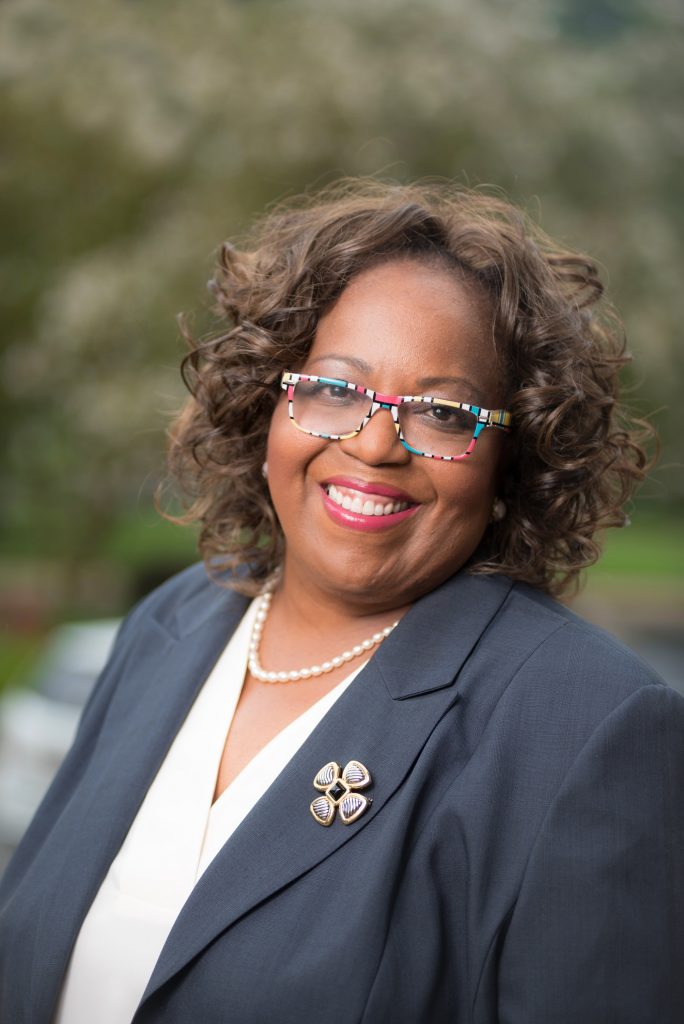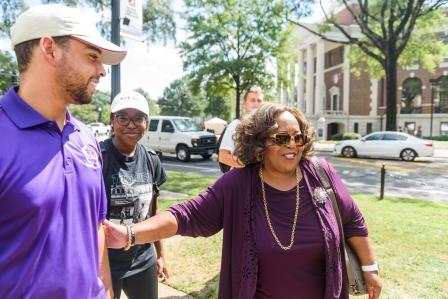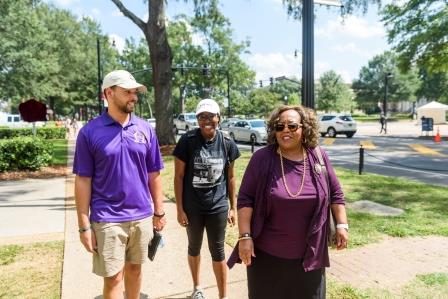
Dr. G. Christine Taylor joined The University of Alabama as vice president and associate provost for diversity, equity and inclusion in August. In this role, Taylor provides leadership for the University to build on its core principles of inclusiveness in learning environments, programs, workforce and strategic partnerships.
Q: Why UA?
A: I love the energy that large institutions present — outstanding faculty, staff and students — so that was a starting point. But as you look at the issues related to diversity and inclusion, what I saw that was most important to me was a committed leadership. There was open conversation and dialogue about issues related to diversity and inclusion; they were not just embedded in the language of the strategic plan. Then, when I came to campus and interviewed the students, they were absolutely outstanding and won my heart over.
Q: What do you hope to accomplish?
A: We want to make sure we have increased the diversity of our faculty and retain them; increase the diversity of our student body, they’re retained and graduated; and make sure we have a welcoming campus climate. No matter who you are or where you’re from, you come here and feel at home. This is a place you think you can thrive and not just survive, and that all of our students, regardless of their walk of life, leave the institution with a better ability to work and live in an increasingly diverse global economy.
Q: How have your past experiences prepared you for this role?
A: I was one of five black kids who went in to an all-white elementary school. I integrated my elementary school. I was 5 years old, first grade. This process (integrating the elementary school) had been met with a lot of push back in both the African-American and white communities. My community knew there was a better educational experience at the white elementary school but there was a real fear for our safety. The (Ku Klux) Klan had burned a cross at the end of our neighborhood street. My dad was very concerned and did not want me to attend. My mother, however, was very assertive and wanted a quality education for me. She knew that the books I would have an opportunity to work with would be better if I went to the school in town, which was honestly closer to our home than being bused to the other school. She exercised her rights and by default taught me how to exercise my rights as she drug me in tow through the process of being enrolled in the school.
My mom lived with me the last three years of her life, and she said, “You know, I’ve been thinking about this. You’ve been getting ready for this kind of work your entire life.” And I said, “Yes, mamma, you’re right. I have been.” My career has been, interestingly, flagged with being the first and/or only, be it woman, African-American, person of color or youngest person on the team. My career before higher education was in broadcasting, which also tends to be a very exclusionary field. I’ve often been that pioneer, if you will, and all of those experiences over time, as well as the institutional experiences I have had, have prepared me for a way of looking at this work that I think is beneficial to both the institution and all of the students and faculty and staff.

Q: What do you think will be your greatest challenge?
A: Here’s what I’ve learned over time in working on issues with diversity and inclusion. It’s really the “Wizard of Oz.” In addition to Dorothy and Toto, there was a scarecrow who was looking for a brain. Issues related to diversity and inclusion are thinking issues. They are information issues and we need to make sure we have the most current information as we move forward on these issues. There was also a tin man who needed a heart. Diversity and inclusion is different from technology and other institutional change processes because it’s about people and their lives, their educational experiences or professional experiences. It’s people at the core. Finally, there was a lion who was looking for courage. To move forward on these issues it takes courage — courage to hold our friends accountable when we know they don’t say or do the right things, hold ourselves accountable and to speak up when we know we need to speak up on injustices that we see. So, think back to the “Wizard of Oz” – we need to be thinking and learning about diversity, remembering that it is about people and having the courage to act in order to build a more inclusive campus community.
Q: Please tell us more about the integration experience.
A: I remember the experience profoundly like it was yesterday. There was so much pressure. All of these hard talks that parents talk about having to give their kids – you know people are probably going to be rude to you, but you can’t let that stop you; you’ve got to keep going and get your lessons – that was unbelievable. Then to have that cross burning at the end of my street, and we knew what it was because the city was resistant to this change. Many didn’t want it. There were only a couple of first-grade teachers that would allow African-American children in their classroom. I remember once the principal called me in to her office to show one of her friends that my mother had tied ribbons in my hair to match my dress. She asked me to turn around slowly and then allowed me to return to class. I remember all of it like it was yesterday. I was this tiny little girl with the very heavy sociopolitical issues resting on my tiny shoulders with my plaid schoolbag in hand complete with the No. 2 pencil, ruler, scissors, glue and crayons. But, I also remember my first-grade teacher, Mrs. Wade, who on that first day stuck her arms out and said, “Christine, I’m so glad to have you in my class.” And she hugged me warmly. She created a learning environment that said to me you are welcome, you are special and you will succeed. She didn’t come in with the notion that because I was an African-American child that I didn’t have the ability, but that I was just as great as the other kids. She encouraged me. I can’t imagine what it would have been like on the other side. I have heard other people talk about those experiences, but I was blessed to have a teacher who believed in me as a child with potential. That was life changing for me as I was honestly terrified that day.
Having grown up in the segregated South – I’m from Tennessee – everything I had ever heard about what people would do to a little black child I thought was going to come true on the first day of first grade. Mrs. Wade was the first white person I had ever intentionally interacted with. Inside my community it was safe and supportive. I was loved. I did not know about outside of our community. From Mrs. Wade I learned that while there may be policies, it is the people aspects or organizations that make a difference. I think that is as true to today as it was back then.
